While it's one of the less divisive topics in cycling, finding the right pedals for you can make a big difference to your riding.
Everyone starts off riding on flat pedals, with many continuing to use them on mountain bikes and commuter bikes. Lots of riders then end up switching to clipless pedals, particularly on the road.
Why? We'll delve into the pros and cons of flat pedals vs clipless pedals, and look at why you might use each system for mountain biking, road cycling, gravel riding and cycle commuting.
First off: clipless pedals clip your feet to the pedals
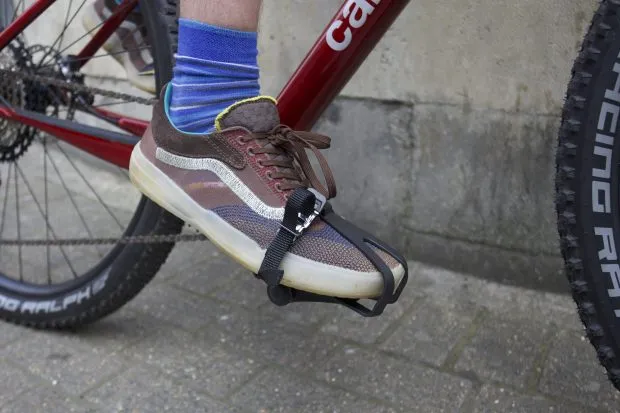
To start, let’s clear up what the difference is between clipless pedals and flats.
Despite the ‘clipless’ name, you do actually clip your shoes into clipless pedals, locking them to your feet.
The term clipless comes from the historic abandonment of toe clips and straps over the top of the shoe, which road riders used to use to hold their feet in place.
While many worry about not being able to get their feet out of the clipless pedal, they are much safer than the toe clips they replaced.
French brand Look launched its clipless pedals in 1984, replacing the toe clips with a system that used a cleat screwed to the bottom of the rider’s shoe that engaged with a locking mechanism built into the pedal, for a more secure, comfortable connection.
There are two main forms of clipless pedal: single-sided and double-sided. Shimano is the biggest name in clipless pedals and the brand behind SPD and SPD-SL single- and double-sided pedals.
Besides the fundamental differences between clipless and flats, there are loads of different designs for both pedal types.
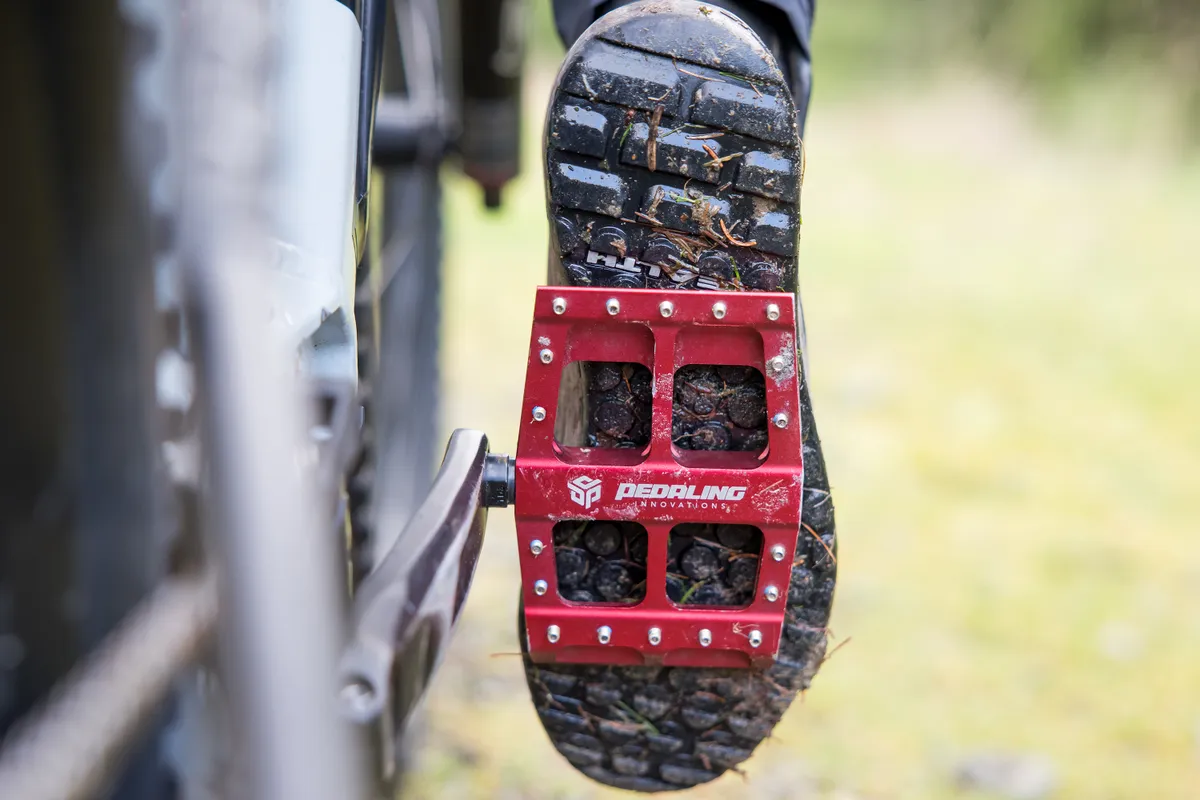
Mountain bike flat pedals usually have a large surface area with metal pins that help to hold your foot in place by gripping to the bottom of mountain bike shoes, while commuter and all-round designs will have a smaller pedal body and less aggressive grips.
Double-sided clipless pedals, designed for mountain biking, also come with different sized platforms. Some are large enough to ride without using cleats, while others are tiny or non-existent and you’ll need to clip in to use them effectively.
Meanwhile, single-sided clipless pedals, aimed at road riders, have a broad platform to aid stability, but otherwise have a minimalist design to save weight, and are difficult to ride without cleats. You’ll need compatible cycling shoes for those.
Setting up clipless pedals correctly is important
With flat pedals, you can place your foot wherever you like on the pedal platform, while clipless pedals reduce how much you can move your foot around.
If you’ve not got them set up correctly, you may be uncomfortable during or after a ride.
One cause of discomfort is incorrectly set up cleats, which can lead to knee pain and other alignment issues.
There's also float to consider – the amount of movement your cleat and pedal combination allows – and how much you should be looking for in your setup. In most clipless pedal systems, you can alter this by using different cleats or making other adjustments.
Are clipless pedals more efficient?
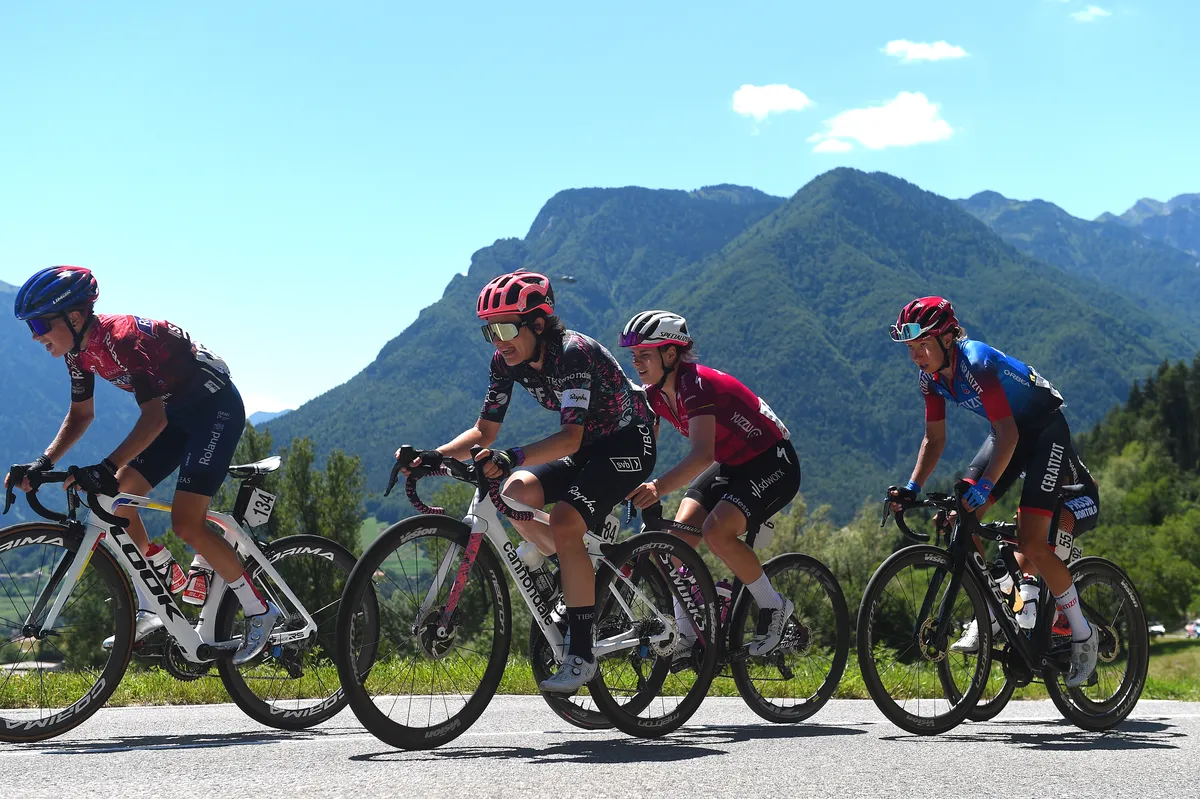
Some scientific research suggests there’s no difference in pedalling efficiency for lower-intensity riding: a pair of trainers on flat pedals was as efficient as clipped-in cycling shoes when tested on a stationary bike.
But an outdoor sprint test showed that clipped-in cycling shoes increased maximum power in a sprint by an average of 16.6 per cent over the trainer/flat pedal combo, while toe clips and straps added 9.7 per cent. So, if you’re riding harder you’ll probably find a benefit from using cycling shoes and clipless pedals.
There are other things to consider beyond efficiency, too. Let’s take a look at some of the reasons why you might use clipless or flat pedals for mountain biking, road cycling and commuting.
Flat vs clipless pedals for mountain biking
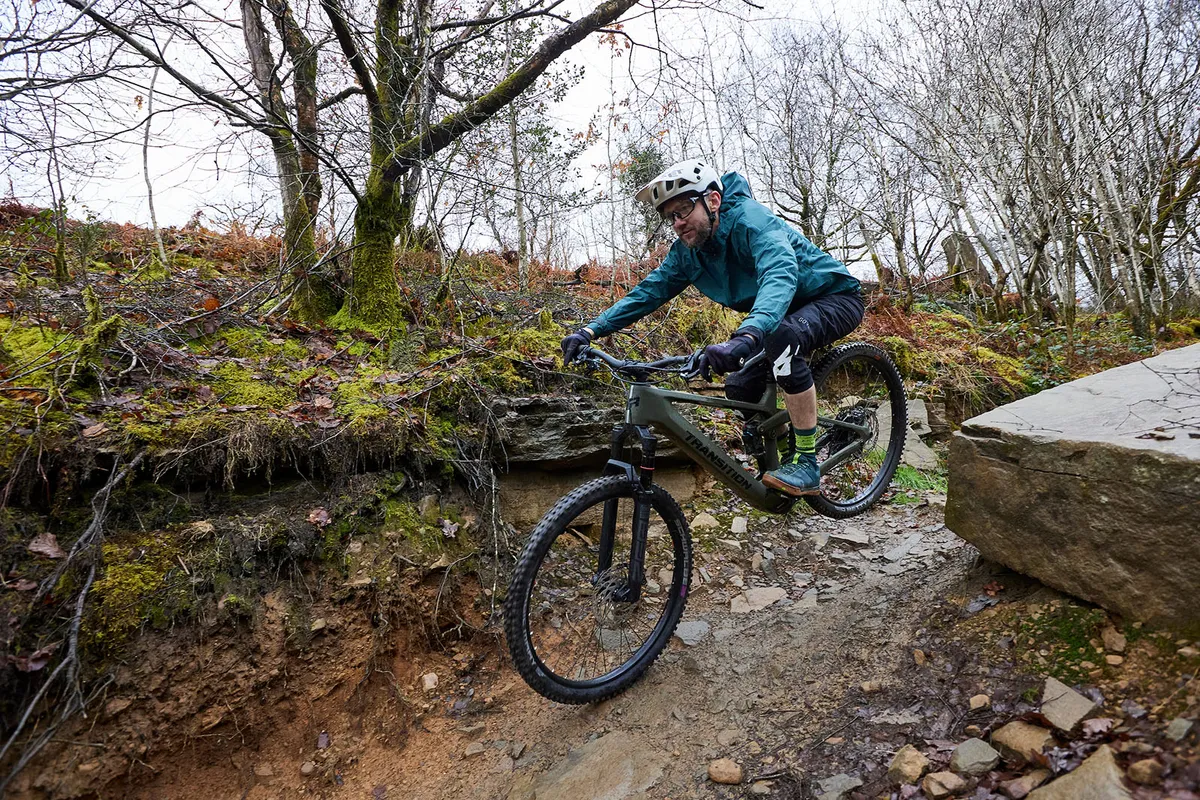
While clipless pedals are pretty much ubiquitous on road bikes, mountain bike riders are split between clipped-in and flat pedal users. In fact, BikeRadar’s own Rob Weaver and Tom Marvin straddle the divide.
Rob is a fan of flat pedals but highlights the importance of the right pedal and shoe combination to give you a lower feeling on the bike and more feedback from the terrain.
You can get your foot off a flat pedal easily to dab it down if needed on a turn or when riding in the wet. If you’re riding jumps or in bike parks, you can alter your foot placement to adjust your balance.
Flats are good for technique too, for example, if you want to learn how to bunny hop you can’t rely on pulling up on the pedals.
On the negative side, Rob points out that pedalling can be less efficient and it’s harder to pedal powerfully through rough terrain when riding flats. Your feet can get bumped off the pedals too and a spiky pedal hitting your shins is, he says, ridiculously painful.
Tom, meanwhile, mostly uses clipless pedals. He likes the security they offer on descents, the power transfer and the consistency of foot placement. But setting out on technical terrain or clipping in on a descent can be more tricky, he says.
While double-sided mountain bike pedals are designed to offer lots of mud clearance, they can still clog up with mud or stones in bad conditions, affecting the pedal’s engagement mechanism.
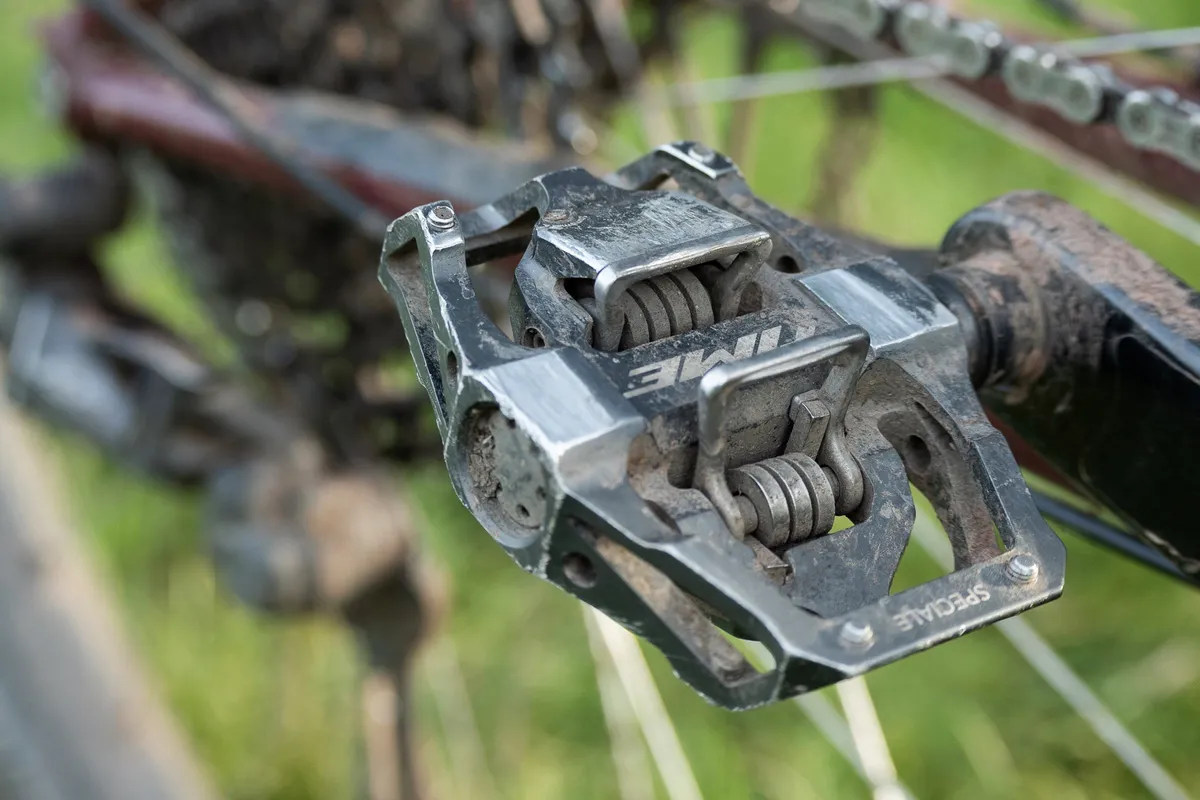
You’ll need to set up your pedals cleats properly as well, to avoid them becoming loose while riding or causing injury.
Elite athlete and coach Tom Bell – who rides at the very highest international level – also rides clipped in.
He’s a cross-country racer, a discipline in which clipped pedals dominate. He points out that many downhill and trail riders tend to prefer flats, whereas for XC the potential for better power transfer from being clipped in is important. A lot of that comes from the stiff carbon sole usually found in shoes designed for use with cleats.
It’s important to practice clipping in and out too, he says, to develop the muscle memory to place your foot for quick and accurate cleat engagement with the pedal.
Flat vs clipless pedals for road cycling
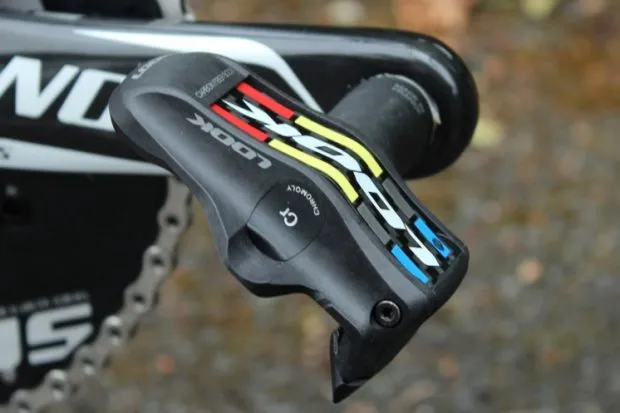
Most roadies ride with single-sided pedals designed specifically for road cycling.
They prefer them because, when paired with stiff-soled road cycling shoes, they give a very firm connection between the foot and the bike. Plus the pros all use them (and regular punters like us love copying what the pros do).
On the other hand, using clipless pedals is a bit of an art for new riders, involving flipping the pedal over as you start to ride and engaging the slots in the shoe’s cleat with the pedal.
Also, we’ve all come to a stop, found we couldn’t clip the shoe out of the pedal in time and keeled over in the road. It’s a rite of passage for road cyclists.
But, typically, roadies aren’t clipping in and out often, so a bit of extra hassle at the start isn’t too much of an issue.
They’re not usually walking far in their shoes either, so the wear on the plastic cleats and the duck-waddle gait that the large, exposed cleat engenders aren’t too big of a deal, until you get to the cafe.
There’s no significant reason why road cyclists shouldn’t use double-sided pedals, though. Tom Bell says that he uses mountain bike pedals on his road bike because that’s what he’s used to from XC racing.
Double-sided pedals are also a good option for touring cyclists, gravel riders and cyclocross racers, where you’re quite likely to be spending periods moving around off the bike and will want to be able to walk or run easily.
While clipless pedals (whether single- or double-sided) are extremely popular on the road, new cyclists may benefit from spending some time on flats as they get used to riding a road bike.
That way they can put a foot down easily if required, without having to learn to clip out, and can focus on getting to grips with how the bike handles.
Some cyclists may also find that they’re almost as efficient pedalling flats on a road bike.
Flat vs clipless pedals for commuting
Whereas road cyclists are likely to pedal for longish periods without stopping, most commutes by bike will be in an urban environment. There are likely to be frequent stops and starts for traffic lights, junctions, pedestrians and negotiating motor vehicles.
Riding flats makes stopping and putting a foot down that much easier than clipless pedals. On the other hand, accelerating again can be easier when clipped in.
Many commuters like to use double-sided clipless pedals because it’s easier to re-engage (you can clip in to either side of the pedal). They’re easier to unclip from too because you can set them to use less force than a single-sided road pedal, and most systems enable you to twist your foot in multiple directions to disengage.
Another advantage over single-sided pedals is you can walk easily in most compatible shoes because there are grips on the bottom, and the cleat is small and usually recessed into the shoe’s sole. That’s useful when you need to get your bike out of a shed or garage at home, or push it to a bike locker at work.
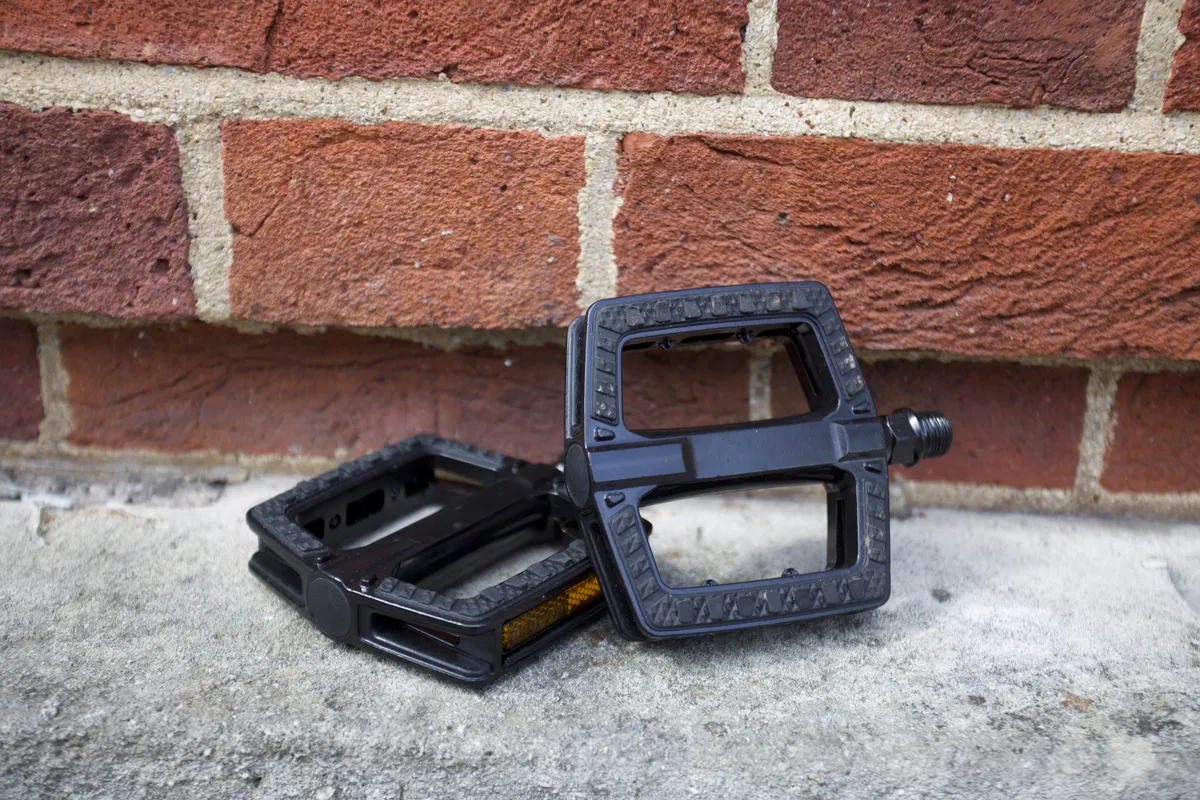
If you choose to ride flats on the commute, mountain bike flat pedals have a large platform and a sophisticated design with pins to help your sole keep a grip on the pedal platform.
Cheaper flat pedals can have quite smooth surfaces; if you’re riding in wet conditions it can be easy for your foot to slip off, particularly as you accelerate, risking a loss of balance. Look for a pedal that will offer grip between the base and your shoe.
Something else to watch out for is a cage-type flat pedal with sharp edges that may cut into the base of a trainer or other non-cycling-specific shoe, which can be uncomfortable and damage your shoe's sole.
Clipless pedals may trump flats if you’re a regular rider and commuting in all weathers. Plus, you can choose bike-specific shoes that keep your feet drier and warmer on your ride and change shoes when you arrive, so you won’t have wet feet all day.
Flat vs clipless pedals for gravel riding
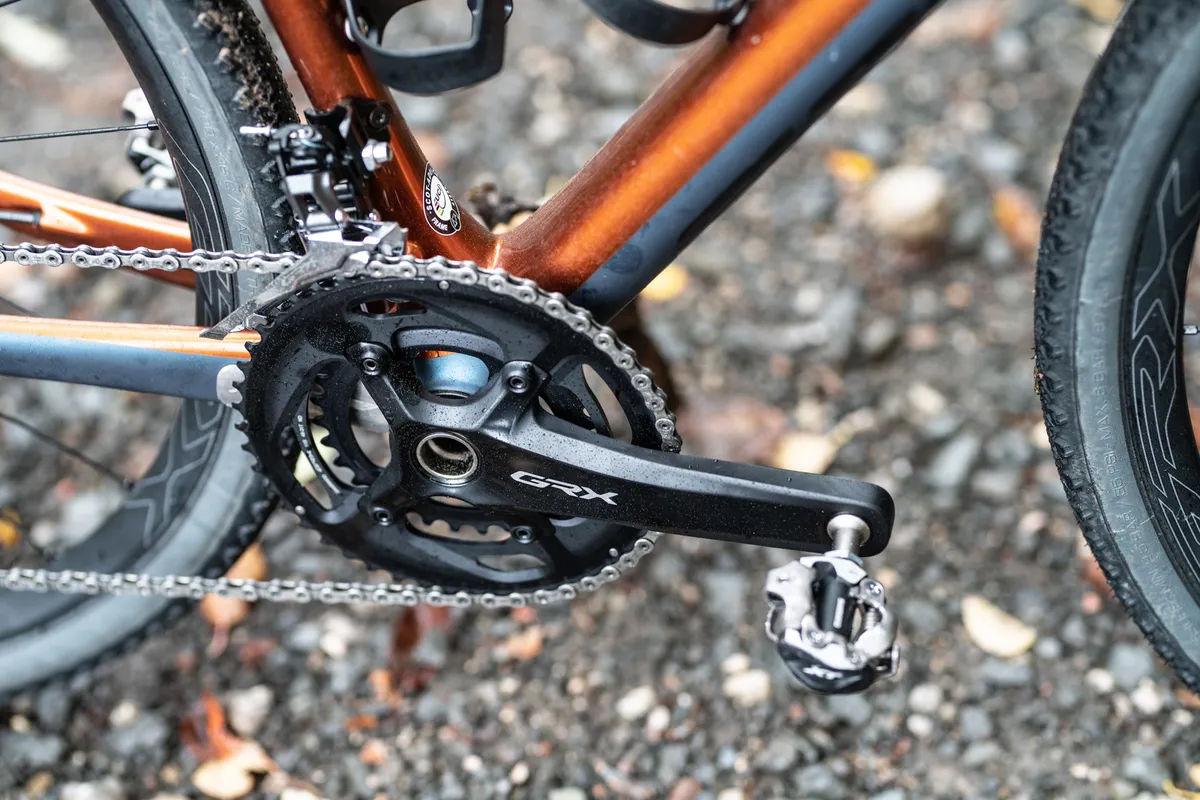
With gravel riding incorporating the muddy nature of mountain biking and mile munching of road cycling, riders usually opt for XC-style pedals.
XC pedals, unlike road pedals, enable riders to use shoes with flat soles for easier walking, while also having better levels of mud shedding for off-road riding.
However, it's not uncommon to see gravel riders sporting flat pedals for off-bike exploration.
We’ve even started to see gravel-specific shoes and gravel-specific pedals, which incorporate larger interfaces to give a road-pedal feel under foot.
Pros and cons of flat pedals
Pros
- Easier to use
- Quicker to get your foot off and on
- Less prone to mud and dirt
- Can alter foot placement and balance (especially for mountain biking)
Cons
- Foot can slip off the platform
- Can be less efficient
Pros and cons of clipless pedals
Pros
- Improved efficiency
- Consistent foot placement
- Secure and stable connection to the bike
Cons
- Harder to use for new cyclists
- Road shoes/cleats are difficult to walk in
